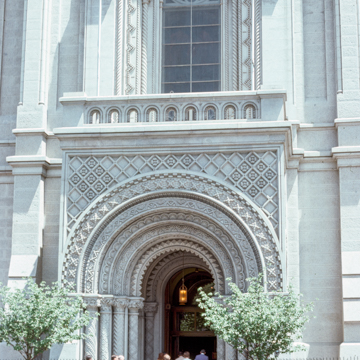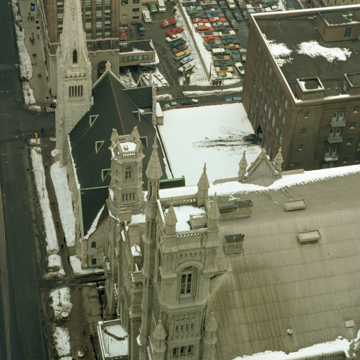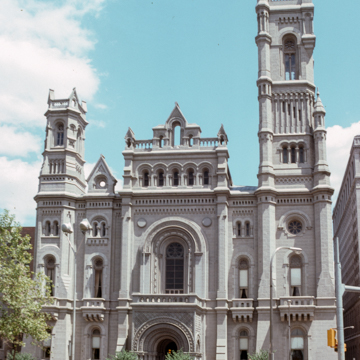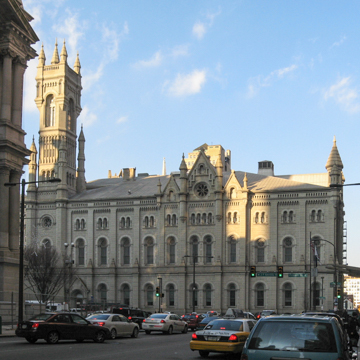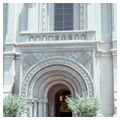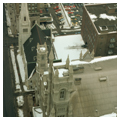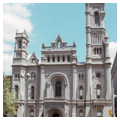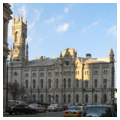A pupil of Samuel Sloan and a member of the first graduating class of Girard College, Windrim chose a monochromatic but highly sculptural version of Victorian historicism, here represented by stridently asymmetrical towers, the larger of which is derived from E. M. Lamb's tower for St. Martin's chapel in Gospel Oak, London, published in 1866 in The Builder. The masonry is cool, sparkling gray Quincy granite that links the facade to the customary Pennsylvania blue-gray marble of civic architecture and contrasts with the structural polychromy preferred by the coming generation of elite Philadelphians. While
You are here
Grand Lodge of the Masonic Temple
1868–1873, James H. Windrim. N. Broad St. and N. Penn Sq.
If SAH Archipedia has been useful to you, please consider supporting it.
SAH Archipedia tells the story of the United States through its buildings, landscapes, and cities. This freely available resource empowers the public with authoritative knowledge that deepens their understanding and appreciation of the built environment. But the Society of Architectural Historians, which created SAH Archipedia with University of Virginia Press, needs your support to maintain the high-caliber research, writing, photography, cartography, editing, design, and programming that make SAH Archipedia a trusted online resource available to all who value the history of place, heritage tourism, and learning.















